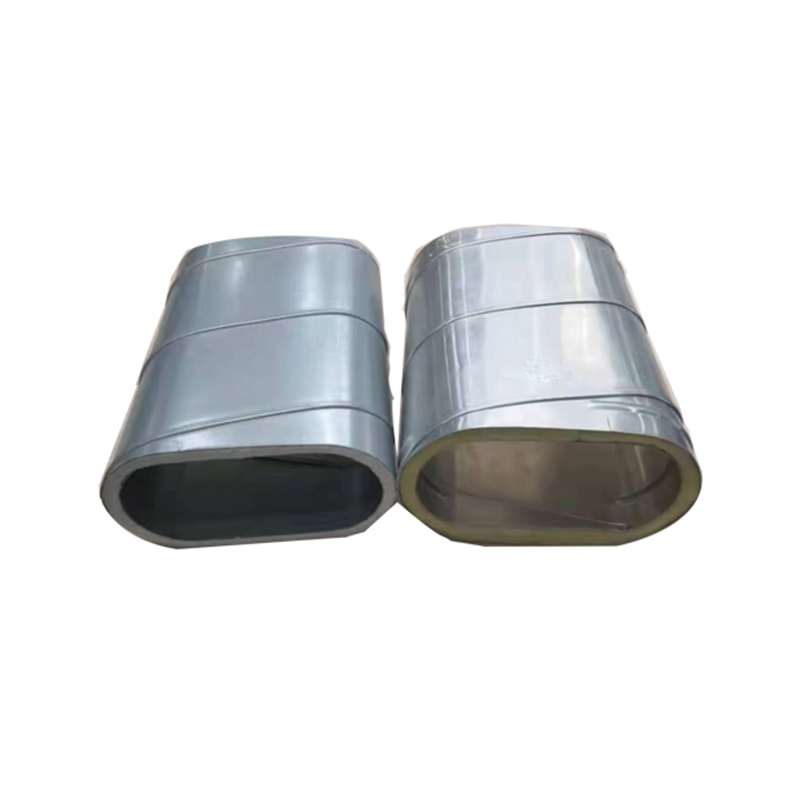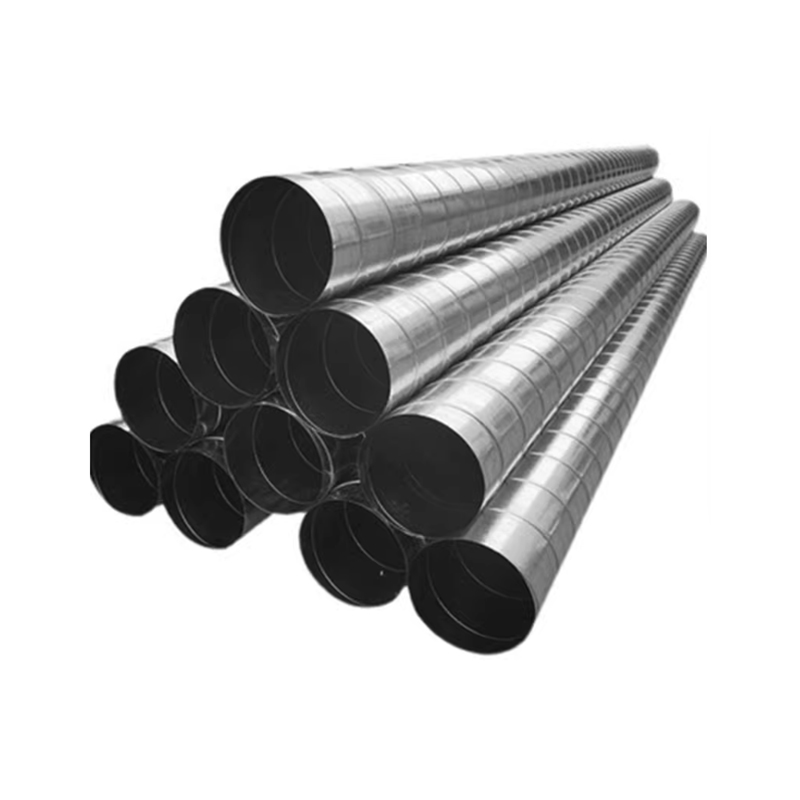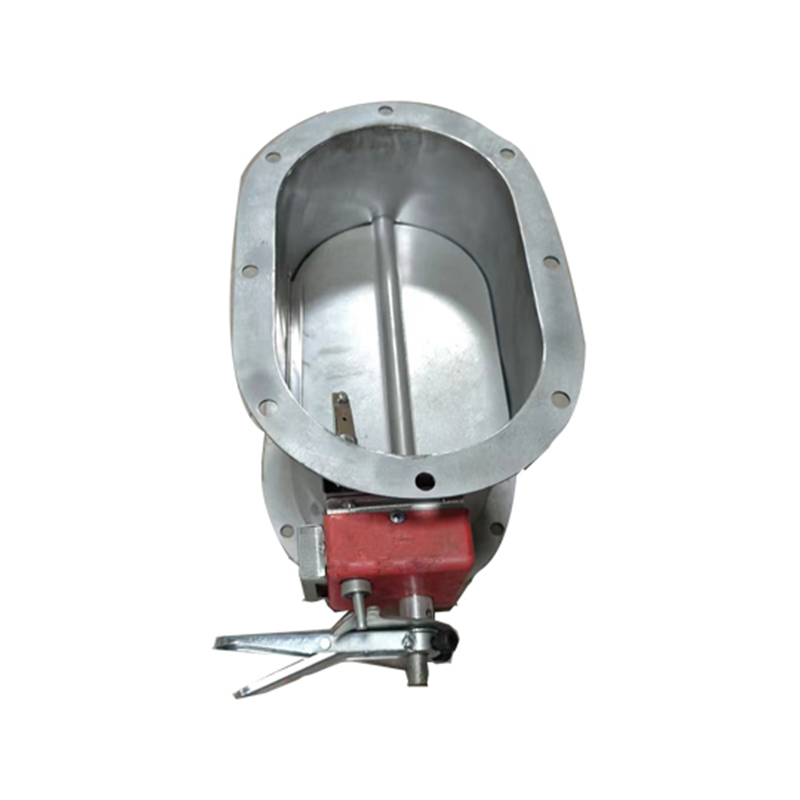How does the oval duct optimize modern ventilation systems with its streamlined design and high efficiency?
Release Time : 2025-11-13
In building HVAC, industrial exhaust, and cleanroom projects, ductwork serves as the core channel for airflow, and its cross-sectional shape directly affects system resistance, space occupancy, and installation efficiency. The oval duct—a metal duct form between a circle and a rectangle—is becoming the preferred solution for high-end commercial buildings, hospitals, data centers, and renovation projects due to its unique streamlined cross-section, excellent aerodynamic performance, and flexible spatial adaptability. It significantly improves building space utilization and construction convenience while ensuring ventilation efficiency.
The core advantages of the oval duct are primarily reflected in its superior airflow performance and low energy consumption. Its elliptical cross-section effectively reduces vortices and local resistance caused by right-angle corners in traditional rectangular ducts, resulting in smoother airflow and 15%–25% lower friction loss compared to rectangular ducts of the same cross-sectional area. This means that for the same airflow, a lower-power fan can be selected, saving energy in long-term operation; or the air delivery distance and uniformity can be improved in existing systems, enhancing indoor thermal comfort. Meanwhile, the perimeter of an oval duct is smaller than that of a rectangular tube with the same flow area. This reduced surface area leads to less insulation material usage and lower heat and cold losses, further improving system energy efficiency.
Spatial adaptability is a key reason for its popularity in modern buildings. Compared to circular ducts which require a larger vertical clearance, the "flat" design of oval ducts allows for flexible passage through ceiling mezzanines, corridors, or equipment floors with limited ceiling height, making them particularly suitable for renovations of older buildings, loft spaces, or areas with dense piping. Their height is typically only 0.4–0.6 times their width, ensuring sufficient flow cross-section while avoiding conflicts with fire sprinklers, cable trays, or structural beams, significantly simplifying integrated piping layout and reducing adjustments needed between different departments.
Manufacturing and installation efficiency are equally outstanding. Oval ducts are made from high-quality galvanized steel, stainless steel, or aluminum sheets, CNC roll-formed, with standardized interfaces supporting flange connections, plug-in connections, or clamp seals. On-site assembly is fast, with low air leakage (meeting GB 50243 Class A requirements). Highly prefabricated, the factory precisely cuts materials according to the BIM model, and assembles them on-site in a "building block" style, shortening the construction period by more than 30%. The surface is smooth and weld-free, with an inner wall roughness Ra ≤ 0.1mm, making it less prone to dust accumulation, easy to clean and maintain, and meeting the stringent cleanliness requirements of hospitals, laboratories, and other facilities.
Structural strength and durability are also crucial. The oval cross-section has excellent compressive and deformation resistance, maintaining stability under negative pressure exhaust or wind-induced vibration in high-rise buildings; the galvanized layer thickness is ≥275g/m², with a corrosion resistance life exceeding 15 years; for special working conditions, stainless steel can be selected, which is resistant to high temperatures and corrosion, suitable for demanding scenarios such as kitchen exhaust and chemical exhaust.
Ultimately, the value of the oval duct lies not only in "transporting air," but also in its geometrically intelligent balance of performance, space, and cost. When a breath of fresh air travels with low resistance through the oval duct, and when engineers can easily lay the pipes within narrow ceilings, this seemingly simple metal component becomes an invisible pillar for the efficient, green, and human-centered operation of modern buildings. With the increasing standards of industrialized building and energy conservation, oval duct is continuously optimizing every cubic meter of air we breathe by combining the beauty of fluid mechanics with the wisdom of engineering practice.
The core advantages of the oval duct are primarily reflected in its superior airflow performance and low energy consumption. Its elliptical cross-section effectively reduces vortices and local resistance caused by right-angle corners in traditional rectangular ducts, resulting in smoother airflow and 15%–25% lower friction loss compared to rectangular ducts of the same cross-sectional area. This means that for the same airflow, a lower-power fan can be selected, saving energy in long-term operation; or the air delivery distance and uniformity can be improved in existing systems, enhancing indoor thermal comfort. Meanwhile, the perimeter of an oval duct is smaller than that of a rectangular tube with the same flow area. This reduced surface area leads to less insulation material usage and lower heat and cold losses, further improving system energy efficiency.
Spatial adaptability is a key reason for its popularity in modern buildings. Compared to circular ducts which require a larger vertical clearance, the "flat" design of oval ducts allows for flexible passage through ceiling mezzanines, corridors, or equipment floors with limited ceiling height, making them particularly suitable for renovations of older buildings, loft spaces, or areas with dense piping. Their height is typically only 0.4–0.6 times their width, ensuring sufficient flow cross-section while avoiding conflicts with fire sprinklers, cable trays, or structural beams, significantly simplifying integrated piping layout and reducing adjustments needed between different departments.
Manufacturing and installation efficiency are equally outstanding. Oval ducts are made from high-quality galvanized steel, stainless steel, or aluminum sheets, CNC roll-formed, with standardized interfaces supporting flange connections, plug-in connections, or clamp seals. On-site assembly is fast, with low air leakage (meeting GB 50243 Class A requirements). Highly prefabricated, the factory precisely cuts materials according to the BIM model, and assembles them on-site in a "building block" style, shortening the construction period by more than 30%. The surface is smooth and weld-free, with an inner wall roughness Ra ≤ 0.1mm, making it less prone to dust accumulation, easy to clean and maintain, and meeting the stringent cleanliness requirements of hospitals, laboratories, and other facilities.
Structural strength and durability are also crucial. The oval cross-section has excellent compressive and deformation resistance, maintaining stability under negative pressure exhaust or wind-induced vibration in high-rise buildings; the galvanized layer thickness is ≥275g/m², with a corrosion resistance life exceeding 15 years; for special working conditions, stainless steel can be selected, which is resistant to high temperatures and corrosion, suitable for demanding scenarios such as kitchen exhaust and chemical exhaust.
Ultimately, the value of the oval duct lies not only in "transporting air," but also in its geometrically intelligent balance of performance, space, and cost. When a breath of fresh air travels with low resistance through the oval duct, and when engineers can easily lay the pipes within narrow ceilings, this seemingly simple metal component becomes an invisible pillar for the efficient, green, and human-centered operation of modern buildings. With the increasing standards of industrialized building and energy conservation, oval duct is continuously optimizing every cubic meter of air we breathe by combining the beauty of fluid mechanics with the wisdom of engineering practice.







